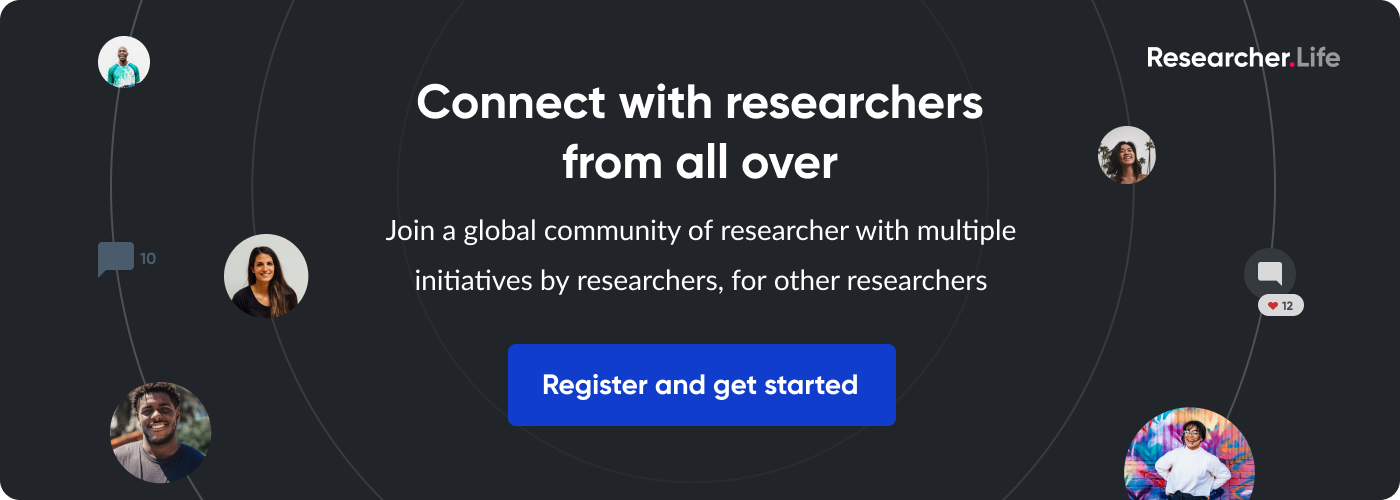Amplify your reach using alternative research communication formats

Digital communication and the Internet era have paved the way for alternative research communication formats by providing accessible platforms for sharing research outside of traditional academic journals. With the rise of social media and open access publishing, researchers can now easily disseminate their work through blogs, podcasts, videos, and other multimedia formats. This has increased the visibility of research and has enabled researchers to connect with a wider audience beyond traditional academic circles.
Why you should diversify your research communication strategy
As a researcher, you can benefit from leveraging diverse communication formats and evolving platforms in many ways.
- Alternative communication formats foster new cross-disciplinary collaborations. Take Dr Andrew Huberman for example. He is a neuroscientist and professor at Stanford University, known for his highly talked about podcasts1 on health and nutrition, as well as research on the visual system and brain plasticity. His interactions with experts from diverse fields for his podcasts have led to collaborations with other researchers and even the industry.2
- Captivating visuals have the power to hook non-research audiences. Do you remember the hypnotic climate spiral3 by climate scientist Ed Hawkins? Researchers and laypersons took notice of his momentous depiction of the upward spiraling of global temperatures.
- Sharing findings on diverse and multiple platforms increases impact and recognition. Dr Hawkins first published his animated climate spiral on his blog and then on Twitter. The spiral began being discussed worldwide and even ended up featuring in the opening ceremony of the Rio Olympics.4
- Innovative communication formats can meet the needs of “digital natives.”
- Using new communication formats provides a break from the drudgery of crafting a traditional manuscript. It also challenges you to explain their research in compelling and innovative ways.
Considering the rapid advances in digital communication and multiple communication formats, it is essential to know how to use them to your advantage to stay ahead!
Beyond the paper: New avenues for research communication
There are many alternative communication formats that can be used to share research findings beyond traditional academic articles. Each of these formats are conducive to sharing on social media, websites, and in presentations.
- Blog posts: You can write blog posts to summarize your research findings in an accessible format for a wider audience. Blog posts can also be useful in highlighting interesting findings, discussing research methods, and reaching out to other researchers and the public.
- Infographics: Visuals are highly effective because humans can grasp an image in a fraction of a second and quickly attach meaning to it. Infographics are therefore a highly effective way to communicate research in a concise, appealing, and easy-to-absorb format.
- Videos: Audiovisual formats are a refreshing change for a reader from information overload caused by text-heavy content. Researchers can create short videos to summarize their research findings and explain complex concepts in a way that grabs and holds attention.
- Podcasts: Podcasts, your companion during walks or a train ride, can also be an effective medium to communicate research to a wider audience. Researchers can host or participate in podcasts to share their research findings with other researchers and the public.
- Interactive visualizations: Interactive visualizations are a great alternative to traditional, static visuals. They help readers understand complex data and relationships better by allowing them to see different patterns emerge as they engage with a graphic.
- Twitter threads: Threads are multiple tweets posted by linking them together. With a thread, you can announce something, or describe a process or a chain of events. Twitter “threads” might get more reads than blog post equivalents and are also much shorter than blog posts. Where blogs tend to be serious, Twitter threads offer a fun alternative, peppered with memes and GIFs if needed!
- Comics: Informational comics, inspired by the classic comic format, can help relay the story of your research through a graphical character.
Choosing a research communication format
You will need to consider multiple points before you decide alternative formats for disseminating your findings. Broadly, let’s categorize these points based on (i) the target audience and (ii) the key message.
Research communication formats based on the people you are trying to reach and engage
Target audience | Research communication formats |
Other researchers | Preprints, blogs, social media, and webinars |
Policymakers and practitioners | Policy briefs, fact sheets, infographics, or videos |
General public | Blogs, social media posts, podcasts, videos, interactive visualizations |
Students | Educational resources such as e-books, online courses, and tutorials |
Research communication formats depending on the key message that you want to convey
Key message | Research communication formats |
Highlighting research impact and societal relevance | Videos, case studies, press releases, social media posts, and blogs |
Sharing research methods | Tutorials, workshops, webinars, and blog posts |
Advocating for a specific policy change or action | Policy briefs, op-eds, videos, and social media campaigns |
How researchers are using alternative research communication formats
To help you appreciate the impact diverse communication formats can have, here are a few examples of how researchers have used them successfully for different purposes.
Infographics for health care awareness and practice
Based on long-standing evidence, Professor Charlie Foster's team helped revise and update the UK Chief Medical Officer physical activity guidelines. The revised national health policy guidance document included six infographics presenting recommended levels of physical activity. The infographics have been downloaded and shared widely, reaching millions of health care and social care workers, raising awareness, and improving practice knowledge.5
Data viz wiz
Stefan Pullen creates fascinating 3D graphics that combine interactivity and animation. The dynamic experience is a learning experience like no other! With an interactive visualization6 that he created using a dataset of the world’s major languages, a user can search for a language and compare it to others, learn which languages are closely related, etc.
TikTok to fight misinformation
TikTok is a social media platform that allows users to create and share short-form videos. Best known for its viral dances and lip-syncing videos, TikTok has also become a platform for science communication. Some researchers use this platform to create short videos that explain scientific concepts, showcase experiments, or debunk common myths. Abbie Richards is a scientific communicator on TikTok, who posts videos to communicate climate science and to combat misinformation. She has cofounded EcoTok, an environmental TikTok collective dealing with social media-based climate communication.7
What’s black, white, and read all over?
While you can reach some sections of the general public through social media, another highly efficient way to get a broader reach is through the press. Of late, climate researchers have been communicating the impact of research on policymaking and raising awareness through op-ed articles in major dailies (such as in The New York Times8). Such pieces receive considerable media coverage and help to raise awareness of the issue and influence policymaking.
Checklist of points to consider when choosing alternative research communication formats
Consider your audience
- What level of technical expertise do they have?
- What’s the age group you have in mind?
- What is the target audience’s education level?
- What are the general interests of the target audience?
Identify the most appropriate format
- What is the technical expertise of your audience?
- What is the nature of your research?
- What is the key message of your study?
- Are you familiar with the platform’s features?
- How much time and resources can you devote?
Choose the right tone and style
- Use conversational language for podcasts, infographics, or videos aimed at a non-technical audience.
- Use formal language for research papers, technical reports, or preprints.
Make it captivating
- Want to make your message more memorable? Ensure that the content is compelling.
- Where possible, make it interactive, i.e., choose dynamic over static and two-way over one-way communication.
Make it accessible
- Keep it openly accessible and open source.
- Provide alternative text for images or videos.
- Use clear fonts and colors.
- Provide transcripts for audio/video content.
Ensure accuracy
- Avoid making claims that are not supported by evidence.
- Provide clear references and citations.
- Give credit to the sources you use.
Test the format
- Test your chosen format and message with a sample of your audience.
- Revise and improve your format to enhance the effectiveness of your communication.
Closing thoughts
Alternative research communication formats allow researchers to reimagine and transform scholarly discourse. New formats provide researchers with exciting and refreshing ways to communicate their findings to a wider audience. By breaking down the traditional barriers to accessing and understanding research, these formats are promoting collaboration, diversity, and innovation in the academic community. So, whether you are a researcher or a curious learner, don’t hesitate to explore the world of alternative research communication formats—you might be surprised by what you discover!
References
- Huberman Lab. Huberman Lab https://hubermanlab.com/.
- Momentous. Momentous Announces a Multi-Year Partnership with the Huberman Lab Podcast and Dr. Andrew Huberman as a Scientific Advisor. https://www.prnewswire.com/news-releases/momentous-announces-a-multi-year-partnership-with-the-huberman-lab-podcast-and-dr-andrew-huberman-as-a-scientific-advisor-301532106.html.
- Ed Hawkins [@ed_hawkins]. Spiralling global temperatures from 1850-2016 (full animation) http://climate-lab-book.ac.uk/2016/spiralling-global-temperatures/ https://t.co/Ypci717AHq. Twitter https://twitter.com/ed_hawkins/status/729753441459945474 (2016).
- Olympic spiral | Climate Lab Book. https://www.climate-lab-book.ac.uk/2016/olympic-spiral/.
- University of Bristol. Development and adoption of national and international physical activity guidelines | Research | University of Bristol. https://www.bristol.ac.uk/research/impact/international-physical-activity-guidelines/.
- Stefan Pullen. Languages of the world. Stefan Pullen https://www.stefanpullen.com/work/languages.
- Tauber, R. Abbie Richards fights TikTok disinformation with a cup of tea, a conspiracy chart and a punchline. News https://www.wgbh.org/news/local-news/2022/02/09/abbie-richards-fights-tiktok-disinformation-with-a-cup-of-tea-a-conspiracy-chart-and-a-punchline (2022).
- Singh, C. Opinion | Spring Never Came to India This Year. The New York Times (2022).
Comments
You're looking to give wings to your academic career and publication journey. We like that!
Why don't we give you complete access! Create a free account and get unlimited access to all resources & a vibrant researcher community.

Subscribe to Career Growth










